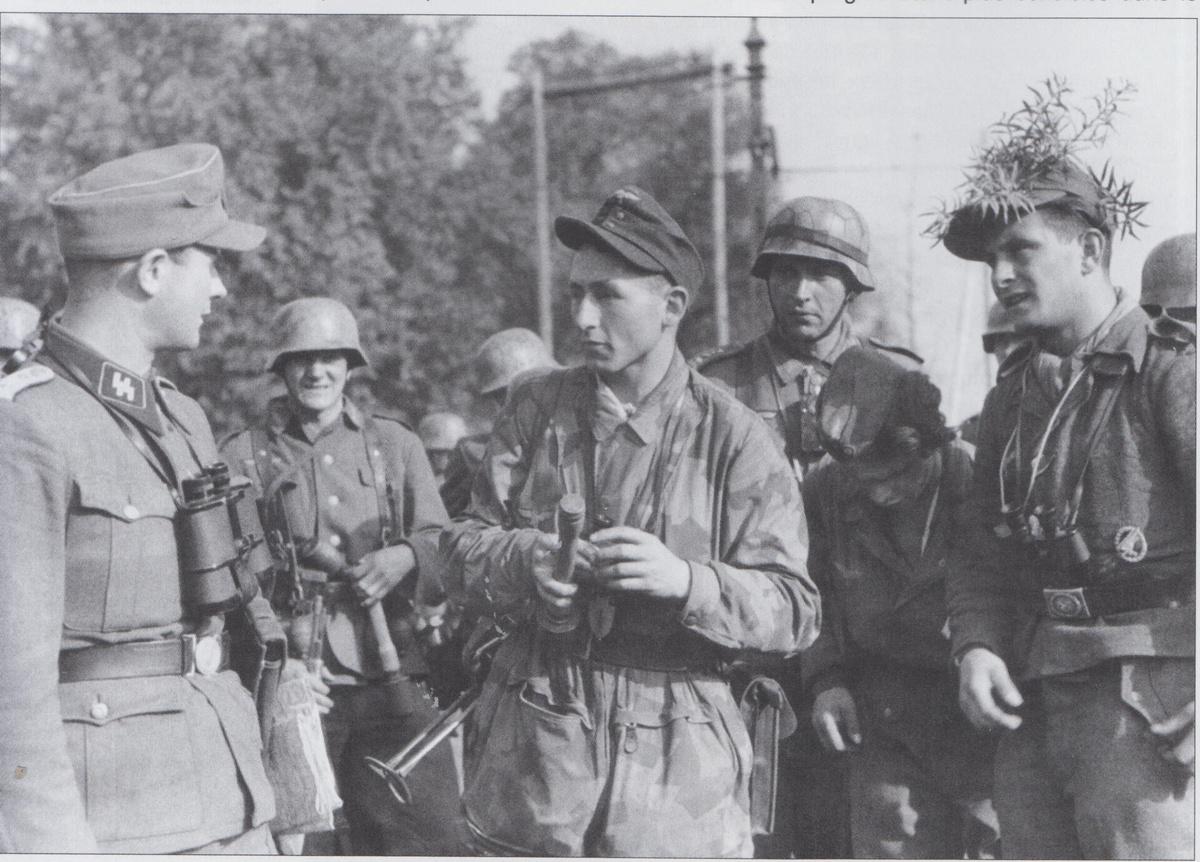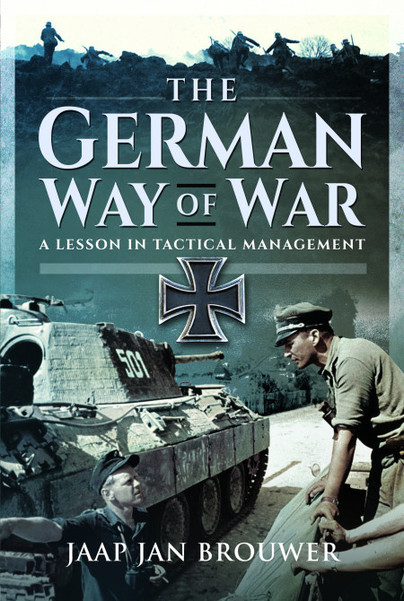Author Guest Post: Jaap Jan Brouwer
THE GERMAN WAY
The German Army lost two consecutive wars and the conclusion is often drawn that it simply wasn’t able to cope with its opponents. This image is constantly reinforced in literature and in the media, where seemingly brainless operating German units led by fanatical officers predominate. Nothing was as far from the truth. The records show that the Germans consistently outfought the far more numerous Allied armies that eventually defeated them: their relative battlefield performance was at least 1.5 and in most cases 3 times as high as that of its opponents. The central question in this book is why the German Army had a so much higher relative battlefield performance than the opposition. A central element within the Prussian/German Army is Auftragstaktik, a tactical management concept that dates from the middle of the nineteenth century and is still very advanced in terms of management and organization. In this series of blogs we will have a closer look at the key elements of Auftragstaktik and cases that will illustrate the effects of these elements in the reality of the battlefield. In this part of the series we focus on Kampfgruppen.
KAMPFGRUPPEN
In addition to operating independently, cooperation between the various army branches – Verbundene Waffen – was another important characteristic of the Prussian/German army. This emphasis on cooperation is interesting because it is almost diametrically opposed to the independence needed by Auftragstaktik. How can you cooperate with other units when you are expected to operate independently? Verbundende Waffen is the doctrine that combines these two opposing doctrines into a powerful whole. Paper is patient and the reality of the battle field unruly, so the Prussian and German army invested a lot of time and energy to get this – sometimes unnatural – way of operating off the ground. But once they mastered this, it turned out to be an extremely powerful tool on the battle field. The structure the Prussians/Germans used was the Kampfgruppe.
The German army, like any army, was structured along functional lines and divided into branches such as infantry, cavalry, artillery, engineers, and so on. This division into specialized units contributes to the professionalism and quality of the individual parts, but can lead to a sub-optimization of the whole. The Prussians and Germans had a clear understanding of this, hence their adage of Verbundene Waffen. After all, the primary function of an army – fighting – requires a context-bound optimal mix of these functional units and the army organization that succeeds to field this has the edge on the battlefield. Cooperation was thus the central theme within the German army and this focus on cooperation was stimulated and practiced in the width and the depth of the organisation in order to make the type of fluid, mobile operations that were envisaged, possible.
Front units could combined be within minutes into these Kampfgruppen, that responded to the demands of the battlefield in that sector of the front at that moment. These Kampfgruppen made the Prussian / German army particularly ‘agile’ and resilient and contributed highly to the battlefield performance. And Kampfgruppen could strategically make the difference, as the case Kampfgruppe Spindler showes at Arnhem in September 1944.
“In addition there was the astonishing flexibility in the chain of command which permitted the instantaneous welding together of the most heterogeneous units, from all arms, into effective battlegroups.”
British Field Marshal Alexander
Kampfgruppen could consist of a few hundred men up to into the thousands, and could exist for a day or one or two weeks. In the end they were dissolved and the units returned to their ‘mother’ division. This focus on cooperation prevented units from disintegrating under pressure and keep on fighting because there still was unit cohesion. The allies (and historians and moviemakers) often interpretated and interpretate this as fanatism, but it for the men in question there was no reason to give up the fight.
CASE: RONCEY JULY 1944: KAMPFGRUPPE LANGANKE
A beautiful example of the emergence and later dissolution of a Kampfgruppe comes from Normandy, 1944. Fritz Langanke, the commander of a company of Panther tanks, of which only two were operational, was ordered on the evening of 28 July to fight with a Kampfgruppe his way from the pocket at Roncey towards the southeast to cross the Seine at La Baleine. He could not get his unit on the road through the chaos that night and was awaiting his chance on the 29th for the next night under constant bombing of Allied planes. In the evening of the 29th his Kampfgruppe set itself in motion with Panzer Grenadiere on the left flank and 50 to 60 parachutists on the right flank to protect the tanks against opponents with bazookas. Behind it followed the two StuGs and some trucks, the mechanized artillery of the infantry and several pieces of mobile Flak guns. At the rear of the column was a second Panther tank and a PzKpfw IV. Just after the departure at 22.00 the Panther of Langanke destroyed his first Sherman tank, followed shortly by an American anti-tank gun. When they met somewhat later two other Shermans, Langanke gave the somewhat hesitant StuG’s the order to attack; the two tanks were easily destroyed. The Kampfgruppe now raced through the night and next hit a column of American halftracks. The rear vehicle was set alight by a tank grenade and the other halftracks were clearly visible set against the light of the flames by the subsequent fire. Several other were hit and the Americans fled in panic. The vehicles quickly changed ownership and when the Kampfgruppe reached Lengronne at the dawn of the day it was doubled in size: 300 German soldiers who had been spread out in small isolated groups en route had joined her so that Langanke could dispose of 600 men of various units. This now formidable combat group fought its way to the damaged bridge at La Baleine to cross the Seine. It was success-fully conquered and crossed and on the southern bank of the Seine the Kampfgruppe arrived in an area that was firmly in German hands, signs indicated where the various ‘mother’ divisions were. The men went on their way to their own units and Kampfgruppe Langanke dissolved within an hour. On August 27, 1944, Langanke received the Knights Cross (Ritterkreuz des Eisernen Kreuzes) for this successful mission.


You can order a copy here.

